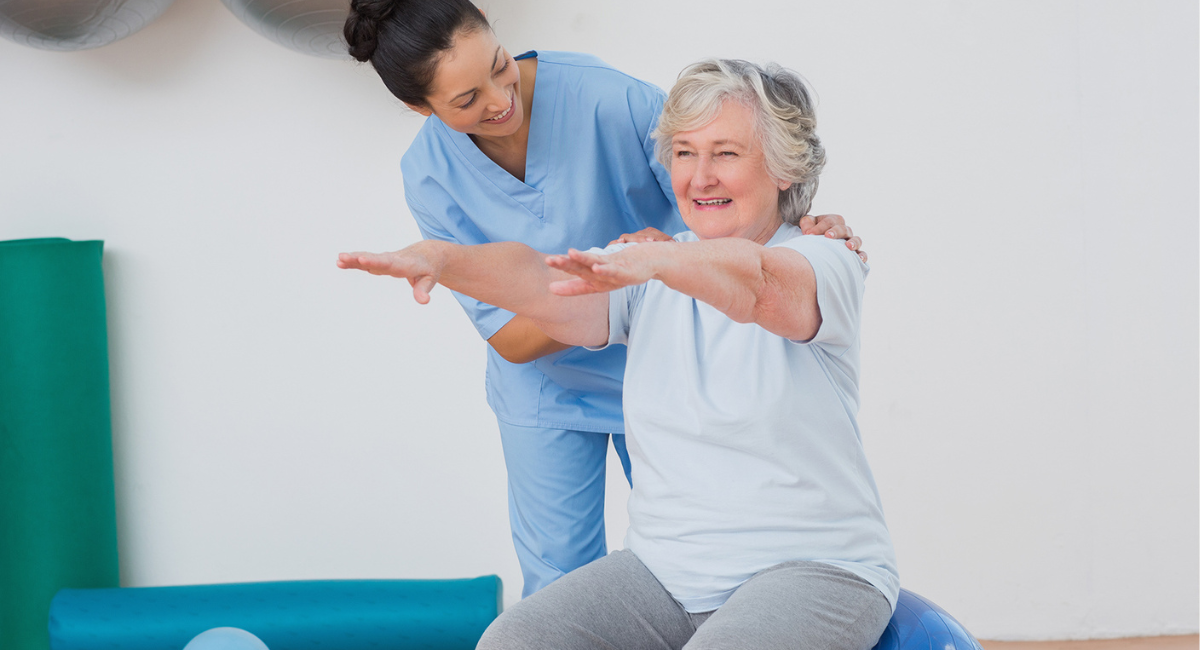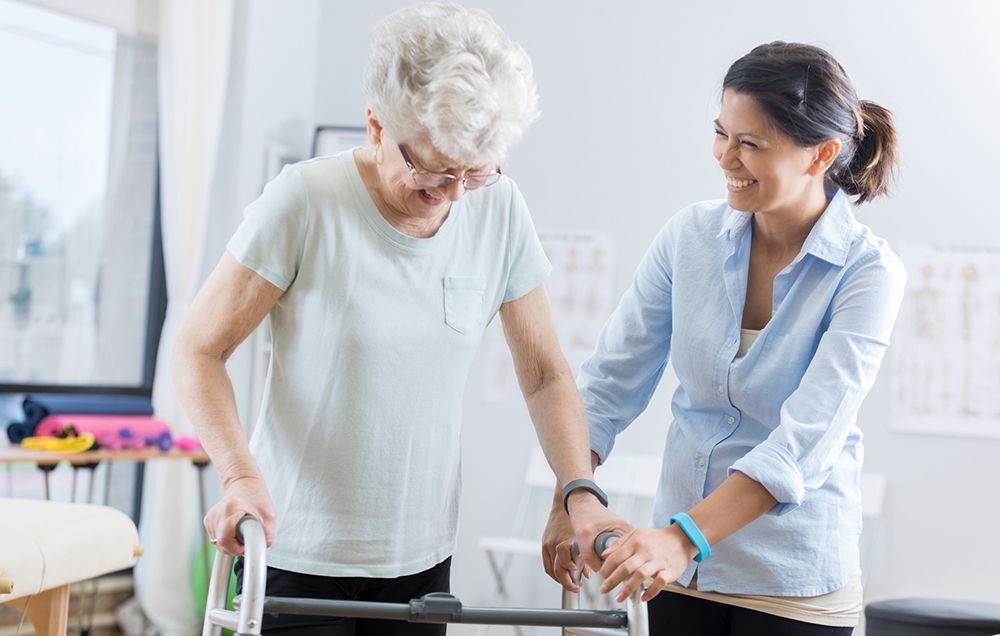Stroke Rehabilitation Exercises - Building Strength And Coordination For Daily Living
Stroke rehabilitation exercises play a vital role in helping individuals regain lost function and improve overall quality of life. These exercises are tailored to address specific deficits caused by the stroke, such as weakness or numbness on one side of the body, difficulty speaking or understanding speech, loss of coordination or balance, and severe headaches.
Author:Katharine TateReviewer:Karan EmeryFeb 20, 202415.6K Shares208.1K Views

Stroke, also known as cerebrovascular accident (CVA) rehabilitation exercises, are crucial activities that aid in the recovery process after a stroke. A stroke occurs when the blood supply to a part of the brain is interrupted or reduced, depriving brain tissue of oxygen and nutrients. This interruption can result from either a blockage in a blood vessel (ischemic stroke) or the rupture of a blood vessel (hemorrhagic stroke).
Stroke rehabilitation exercisesplay a vital role in helping individuals regain lost function and improve overall quality of life. These exercises are tailored to address specific deficits caused by the stroke, such as weakness or numbness on one side of the body, difficulty speaking or understanding speech, loss of coordination or balance, and severe headaches.
Range Of Motion Exercises
Range of motion exercises are an important part of rehabilitation after a stroke. The goal is to keep the affected limbs flexible and avoid stiffness by slowly moving them through their full range of motion. The goal of these activities is to make it easier to move your joints and muscles and to do everyday things.
Some examples are light stretching, passive movements helped by a therapist or caretaker, and active movements done by the person themselves. Range of motion movements can help keep you from getting contractures, boost your circulation, and help your body heal. They are usually made to fit the person's wants and abilities, and they get easier as their mobility gets better.
Strength Training
Strength training is an important part of recovering from a stroke because it helps rebuild muscle strength and improves functional skills. It uses resistance bands, weights, or exercises that you can do with your own body to work on specific muscle groups that were damaged by the stroke.
Strength training helps build muscle, improve endurance, and improve total physical performance by making muscles work harder through resistance. It can also help improve balance, steadiness, and coordination, all of which are things that are often lost after a stroke. Strength training routines are based on what each person can do, and may include things like squats, lunges, lifting weights, and arm curls.
Balance Exercises
Balance movements are an important part of rehabilitation after a stroke because they help restore and improve stability and balance, which are often lost after a stroke. The goal of these workouts is to improve muscle control, proprioception, and coordination. This will lower the risk of falling and make it easier to do things on your own.
There are many things that can be done to improve your balance, like standing on one leg, learning heel-toe walking, using balance boards or stability balls, and doing yoga or Tai Chi moves. Balance exercises challenge the body's ability to stay balanced in different positions and situations. These exercises excite the nervous system and encourage neuroplasticity, which makes it easier to learn how to balance and coordinate again.
Coordination Drills
Coordination drills are an important part of therapy after a stroke because they help improve motor control, dexterity, and hand-eye coordination, all of which may be less good after a stroke. As part of these drills, you practice certain movements or jobs that need your body to work together perfectly. Some examples are grabbing and throwing a ball, playing table tennis or hand-eye coordination games, or doing fine motor tasks like putting together puzzles or threading beads.
People who have had a stroke can retrain neural pathways, improve their motor skills, and get back to doing daily tasks on their own by doing coordinated actions. People's coordination drills are usually made to fit their specific needs, and as their skills get better, the drills get harder. This way, the person can keep growing and recovering while they are in therapy.
Walking Practice
Walking practice is an important part of rehabilitation after a stroke because it helps people regain their mobility, balance, and confidence in their walking skills. This includes planned, step-by-step tasks that help people who have had a stroke get back to being able to walk without much help or on their own.
Depending on the person's level of function, walking practice may include exercises like walking with the help of a therapist or a device like a cane or walker, learning heel-toe walking to improve balance, and slowly going farther and faster. Focusing on correct walking mechanics and addressing specific problems like weakness or spasticity, walking practice helps to retrain neural pathways, strengthen muscles, and improve coordination.
Fine Motor Skill Exercises
Fine motor skill exercises are very important for recovering from a stroke because they help the small muscles in the hands and arms that may not have worked as well after the stroke. These exercises focus on the exact movements you need to do things like write, button clothes, and use utensils. Some examples are picking up small things, working with putty or clay, stringing beads together, or putting together puzzles.
Stroke survivors can get back control and strength in their fine motor skills by practicing over and over again and making small steps forward. This makes it easier for them to do daily jobs on their own. Brain plasticity is also increased by practicing fine motor skills. This means that the brain can change and adapt, which helps with functional healing.
Mirror Therapy
Mirror therapy is a new way to help people who have had a stroke get better. It uses a mirror to make the affected arm seem like it can move by reflecting the movement of the unaffected limb. By looking at a reflection of the healthy limb moving, the brain is tricked into thinking that the affected limb is moving. This activates neural pathways related to motor function and speeds up healing.
Mirror treatment may help ease pain, boost motor skills, and broaden the range of motion in the hurt limb. Traditional physical therapy is often used along with it, and it can be changed to fit the wants and abilities of each person. Mirror therapy has shown promise in helping stroke patients improve their quality of life and motor skills.
Cycling
Cycling is a good way to get back in shape after a stroke because it is a low-impact cardiovascular workout that also works on strength, agility, and balance. Cycling, whether on a stationary bike or outside, gives people who have had a stroke a chance to do rhythmic, repetitive moves that improve circulation and heart health in general.
Cycling can also help build muscle in your legs and make your balance better, which are important for walking and other daily tasks. Stationary bikes are good for people of all fitness levels and abilities because the intensity and resistance levels can be changed. This means that as strength and endurance improve, exercise intensity can be gradually increased.
Pilates
Pilates is a popular way to work out that focuses on making the core muscles stronger, the limbs more flexible, and the body's general awareness and control better. This workout method, which was created by Joseph Pilates, focuses on precise movements, good alignment, and controlled breathing. Pilates exercises can be changed to fit people with different levels of fitness and physical skills, which means they can be used by people who are recovering from a stroke.
Pilates works on the deep muscles in the back, pelvis, and belly. This helps improve posture, stability, and balance, all of which can be lost after a stroke. Pilates also includes moves that improve balance and proprioception, which can help with the recovery of motor skills.
Stroke Rehabilitation Exercises - FAQ
What Exercises Are Good For Stroke Recovery?
You can do things like walking, running, swimming or cycling by yourself or with someone else. You can use a swimming pool to help build strength and stamina by doing squats and walking through the water.
How Long Does It Take To Fully Recover From A Stroke?
Recovery time after a stroke is different for everyone - it can take weeks, months, or even years. Some people recover fully, but others have long-term or lifelong disabilities. Learn more about stroke rehabilitation from the National Institute of Neurological Disorders and Stroke.
What Heals The Brain After A Stroke?
Regardless of which skills survivors want to focus on, repetitive practice can activate neuroplasticity and help the brain heal itself after stroke. As new neural pathways grow stronger and stronger, survivors experience recovery of lost functions.
Final Thoughts
Stroke rehabilitation exercises are essential for improving strength and coordination needed for everyday tasks after a stroke. By regularly engaging in these exercises, individuals can gradually regain lost abilities and enhance their quality of life. It's crucial to incorporate stroke rehabilitation exercises into daily routines to maximize recovery and promote independence in daily living.

Katharine Tate
Author

Karan Emery
Reviewer
Latest Articles
Popular Articles
